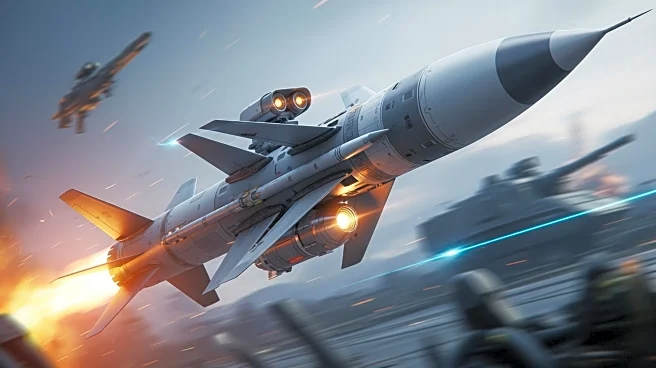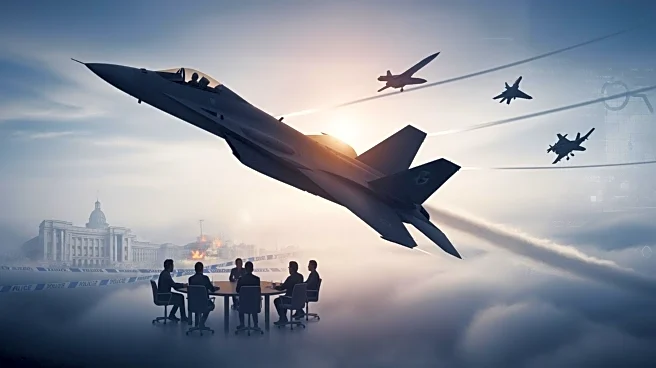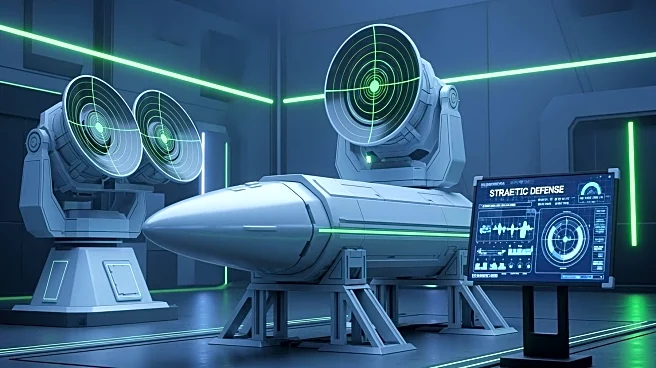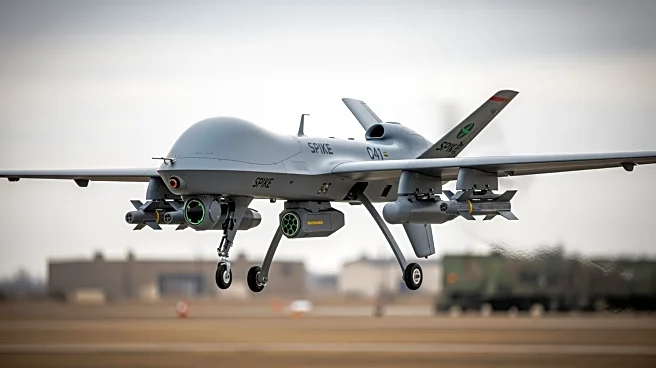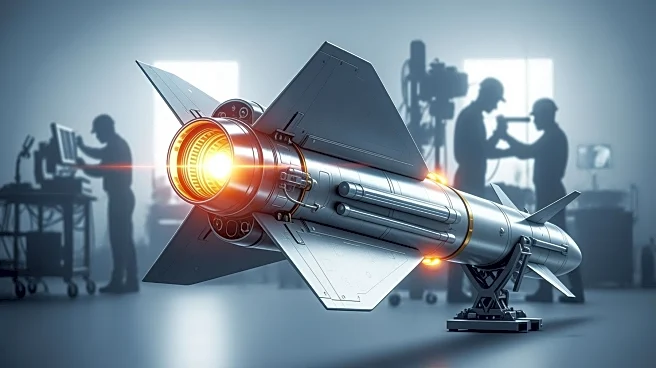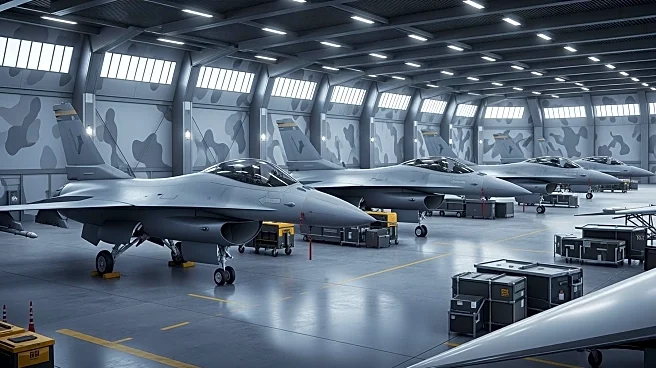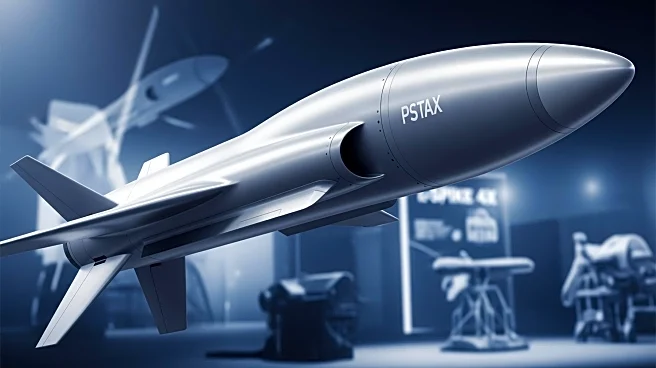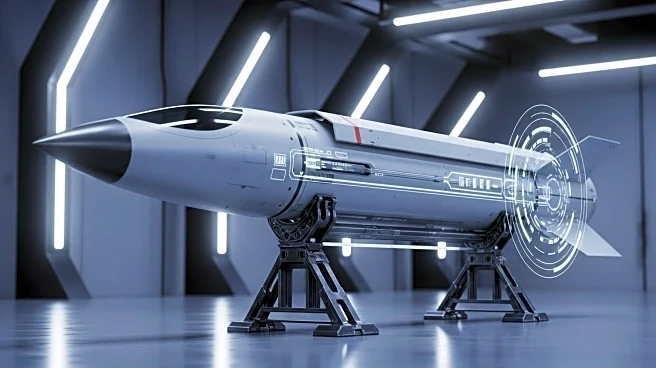What's Happening?
Rafael has unveiled the L-SPIKE 4X loitering missile at the AUSA exhibition in Washington, targeting the U.S. Army's Launched Effects program. The missile comes in two configurations: anti-tank and multipurpose,
and can be launched from existing Spike launchers on various platforms. It features a loitering mode with a 25-minute airborne duration and can engage targets up to 40km away. The L-SPIKE 4X is designed for operation in contested environments, with hardened communications and AI-enabled functions for target recognition. Rafael aims to provide resilient, precise, and operator-controlled effects for U.S. and allied forces.
Why It's Important?
The introduction of the L-SPIKE 4X missile is significant as it aligns with the U.S. Army's emphasis on autonomous systems and advanced defense capabilities. The missile's ability to operate in GPS-denied environments and its AI-enabled functions enhance its effectiveness in modern warfare. Rafael's offering could bolster the U.S. Army's Launched Effects program, which seeks to equip divisions with unmanned systems for reconnaissance, surveillance, and precision strikes. This development reflects the growing importance of autonomous and AI-driven technologies in military operations.
What's Next?
The U.S. Army's focus on integrating autonomous systems into its operations suggests that Rafael's L-SPIKE 4X could play a key role in future military strategies. The Army plans to equip every division with Launched Effects by 2026, indicating potential procurement and deployment of Rafael's missile. As the Army continues to explore advanced technologies, collaborations with defense companies like Rafael may lead to further innovations in unmanned systems and AI-driven capabilities.
Beyond the Headlines
The deployment of loitering missiles raises ethical and strategic questions about the use of autonomous weapons in warfare. As AI and automation become more prevalent, the need for international regulations and ethical guidelines becomes crucial to prevent misuse and ensure accountability. Additionally, the integration of AI in military systems could lead to shifts in military strategy and operational dynamics, influencing the future of warfare.
